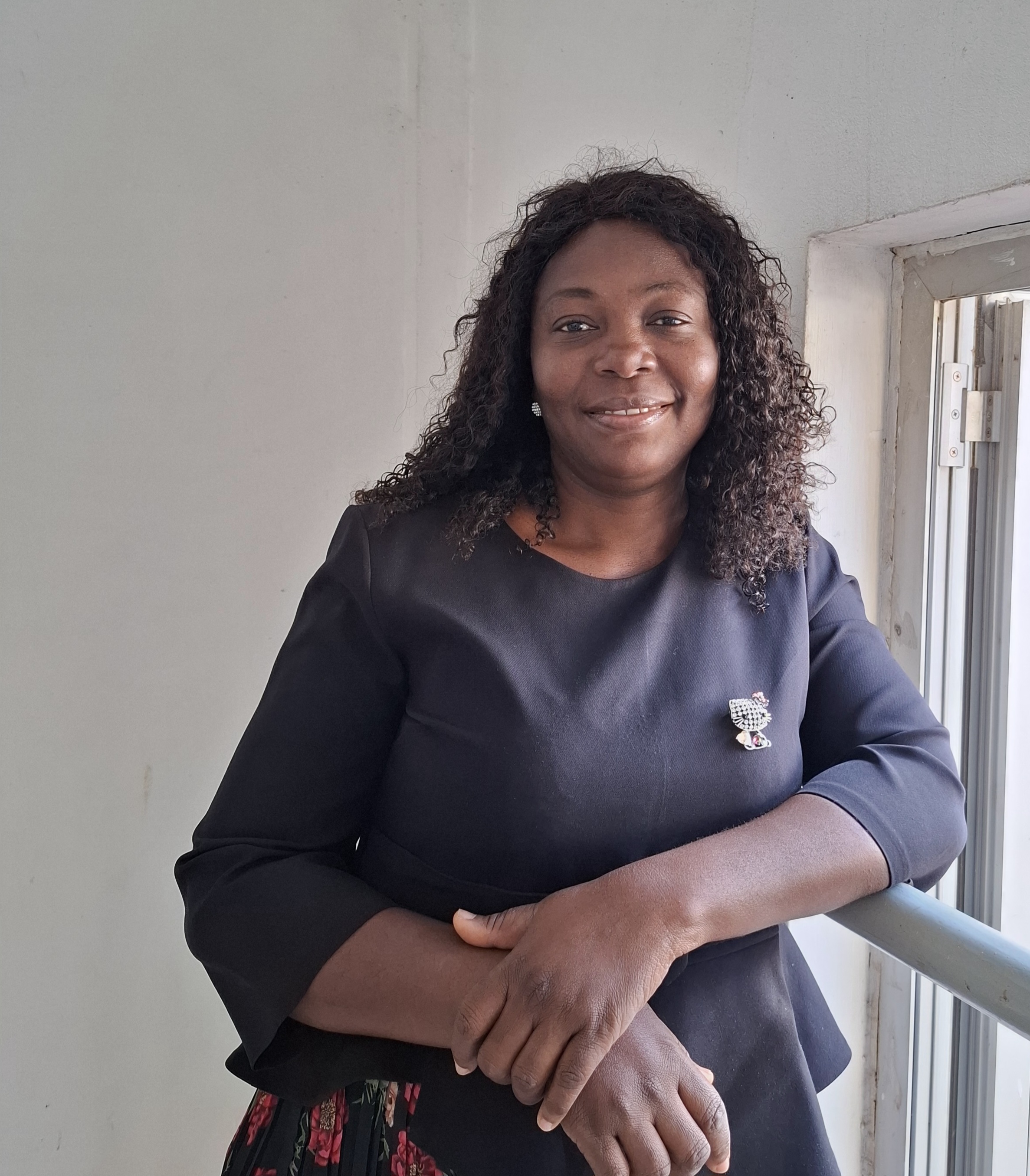Case Report
Diffuse Large B-Cell Lymphoma with Multifocal Gastrointestinal Infiltration: A Case Report
1 Internal Medicine Resident, Institute Guatemalan of Security Social (IGSS), Hospital General of Diseases, University of San Carlos of Guatemala, Guatemala.
2 Head of the Hematology Unit, Institute Guatemalan of Security Social (IGSS), Hospital General of Diseases, Guatemala.
3 Hematologist, Institute Guatemalan of Security Social (IGSS), Hospital General of Diseases, Guatemala.
4 Internal Medicine, Institute Guatemalan of Security Social (IGSS), Hospital General of Diseases, Guatemala.
*Corresponding Author: Edras Hernández, Internal Medicine Resident, Institute Guatemalan of Security Social (IGSS), Hospital General of Diseases, University of San Carlos of Guatemala, Guatemala.
Citation: Hernández. E, Rosales. D, Sanchez. B, Guerra. V, Mateo. S. (2025). Diffuse Large B-Cell Lymphoma with Multifocal Gastrointestinal Infiltration: A Case Report. Clinical Case Reports and Studies, BioRes Scientia Publishers. 9(6):1-4. DOI: 10.59657/2837-2565.brs.25.242
Copyright: © 2025 Edras Hernández, this is an open-access article distributed under the terms of the Creative Commons Attribution License, which permits unrestricted use, distribution, and reproduction in any medium, provided the original author and source are credited.
Received: March 11, 2025 | Accepted: March 25, 2025 | Published: April 01, 2025
Abstract
Introduction: Diffuse large B-cell lymphoma (DLBCL) with multifocal gastrointestinal infiltration is a rare manifestation of advanced non-Hodgkin lymphomas. Secondary involvement of the gastrointestinal (GI) tract is associated with disseminated disease, carrying significant diagnostic and prognostic implications. Distinguishing between secondary infiltration and primary gastrointestinal lymphoma (PGL) is crucial, as they require different therapeutic approaches.
Case Presentation: A 65-year-old male presented with unexplained weight loss of 10% and non-quantified fever. A computed tomography (CT) scan revealed lymphadenopathy in the lesser curvature of the stomach, liver, and retroperitoneum. Upper gastrointestinal endoscopy identified an extensive gastric ulcer and a submucosal lesion in the duodenum, while colonoscopy showed rectal polyps. Histopathological examination reported a poorly differentiated neoplasm with Giemsa staining positive for Helicobacter pylori. Upon admission, the patient exhibited cachexia and functional dehydration (ECOG 2). A thoracoabdominal CT scan demonstrated multiple mesenteric, retroperitoneal, and renal hilum lymphadenopathies, along with thickening at the gastroesophageal junction. Immunohistochemistry confirmed germinal center-origin DLBCL, stage IV (IPI 2). The patient was initiated on R-CHOP chemotherapy, which was well tolerated without hematologic toxicity.
Discussion: This case highlights the diagnostic complexity of DLBCL with multifocal GI tract involvement. Imaging and endoscopy were key in assessing disease extent, while immunohistochemistry confirmed the diagnosis. Differentiating secondary infiltration from primary gastrointestinal lymphoma was essential, as lymphadenopathy and systemic dissemination supported the diagnosis of advanced-stage lymphoma. The R-CHOP regimen proved to be an appropriate therapeutic approach, demonstrating an initial favorable response. The patient’s positive outcome underscores the importance of a multidisciplinary approach in hematologic malignancies with gastrointestinal involvement.
Conclusion: Diffuse large B-cell lymphoma with multifocal gastrointestinal infiltration is an uncommon presentation that requires early diagnosis and comprehensive management. A combination of endoscopic, histopathological, and imaging studies is essential to establish the diagnosis and differentiate it from other conditions. The R- CHOP-based therapy was well tolerated, reinforcing its role in treating such patients.
Keywords: diffuse large b-cell lymphoma; gastrointestinal infiltration; immunohistochemistry; r-chop; helicobacter pylori
Introduction
Lymphomas involving the gastrointestinal (GI) tract can present as either primary gastrointestinal lymphoma (PGL) or secondary gastrointestinal infiltration in the context of systemic disease. Primary GI lymphoma (PGL) accounts for approximately 1-4% of all gastrointestinal malignancies and represents about 10-15% of all non- Hodgkin lymphomas (NHL) [1,2]. It is defined by lymphoma confined to the GI tract with or without regional lymph node involvement but without bone marrow or peripheral blood involvement at the time of diagnosis [3]. The stomach is the most commonly affected site, followed by the small intestine and colon [2,4]. Secondary gastrointestinal involvement, on the other hand, occurs when systemic lymphomas such as diffuse large B-cell lymphoma (DLBCL) or peripheral T-cell lymphoma spread to the digestive tract [5]. This phenomenon is more frequent in advanced-stage NHL, affecting between 10-20% of patients with systemic DLBCL [6]. Secondary GI infiltration is often associated with disseminated disease, including lymph node involvement, bone marrow infiltration, and extranodal spread [4,7]. The clinical presentation of both primary and secondary GI lymphoma can be nonspecific, including symptoms such as abdominal pain, weight loss, gastrointestinal bleeding, obstruction, or perforation [3,8]. The distinction between PGL and secondary GI infiltration is critical as it significantly impacts prognosis and therapeutic decision-making. PGL is typically managed with localized therapies, including surgery and radiotherapy, while secondary GI involvement requires systemic chemotherapy, such as R-CHOP or DA-EPOCH-R, due to the widespread nature of the disease [9]. In addition, secondary GI lymphoma tends to have a more aggressive course and poorer prognosis than PGL, often requiring intensified treatment strategies [10]. Accurate diagnosis of GI lymphoma relies on a combination of imaging, endoscopic evaluation, histopathology, and immunohistochemistry. Positron emission tomography-computed tomography (PET-CT) and contrast-enhanced CT scans play essential roles in staging and assessing disease extent, whereas endoscopic biopsy with immunohistochemical analysis (CD20, BCL6, Ki-67, and MYC expression) is necessary for classification and risk stratification [5,6]. Additionally, Helicobacter pylori infection has been implicated in the pathogenesis of certain gastric lymphomas, such as mucosa-associated lymphoid tissue (MALT) lymphoma, making its detection and eradication clinically relevant [7]. Given the high risk of misdiagnosis due to overlapping clinical features, a multidisciplinary approach involving hematologists, gastroenterologists, pathologists, and oncologists is essential to ensure timely diagnosis and appropriate treatment selection for patients with gastrointestinal lymphoma [8].
Case Presentation
A 65-year-old male presented with progressive, unintentional weight loss (10% of body weight) over several months and intermittent fever. Initial evaluation by a private physician included a CT scan, which revealed lymphadenopathy in the left hepatic lobe, lesser curvature of the stomach, and retroperitoneum. These findings prompted further evaluation with upper gastrointestinal endoscopy and colonoscopy. Endoscopy revealed an extensive gastric ulcer and a submucosal duodenal lesion (Figure 1). Colonoscopy identified rectal polyps (Figure 2). Histopathologic analysis reported a poorly differentiated, extensively ulcerated neoplasm with Giemsa staining positive for Helicobacter pylori (Figure 3) [6].
Figure 1: Upper gastrointestinal endoscopy showing an ulcerated lesion in the gastric body.
Figure 2: Colonoscopy demonstrating rectalpolyps.
Figure 3: Histopathologicfindings: poorly differentiated ulcerated neoplasm with Giemsa staining positive for Helicobacter pylori.
Upon admission, the patient exhibited cachexia, dehydration, and an ECOG performance status of 2. A thoracoabdominal CT scan demonstrated retrocrural and retroesophageal lymphadenopathy, suggesting a lymphoproliferative disorder. Additional findings included thickening at the gastroesophageal junction, a polypoid nodule in the greater curvature of the stomach, and extensive mesenteric, retroperitoneal, and renal hilum lymphadenopathies.
Figure 4: Abdominal CT scan A: axial section, B: coronal C: sagittal, in a patient with situs ambiguous. Thickening and a polypoid plaque lesion are observed in the greater curvature of the gastric body.
Her patient was admitted to hematology, where immunohistochemistry confirmed germinal center-origin DLBCL, classified as stage IV (IPI 2). R-CHOP chemotherapy was initiated, with good tolerance and no hematologic toxicity (Figure 5) [7].
Figure 5: Immunohistochemistry result: histological findings and immunohistochemistry studies correspond to diffuse large B-cell non-Hodgkin lymphoma, originating in the germinal center, cd20 and bcl6 positive immunophenotype (Hans and Choi algorithm), 85% nuclear proliferation.
Discussion
This case highlights the diagnostic and therapeutic complexity of diffuse large B-cell lymphoma (DLBCL) with multifocal gastrointestinal infiltration. The patient exhibited systemic symptoms such as significant weight loss, fever, and disseminated lymphadenopathy, which are characteristic findings of advanced-stage disease [1]. Imaging and endoscopic studies revealed ulcerated lesions in the stomach and duodenum, as well as rectal polyps. Histopathological confirmation through immunohistochemistry demonstrated CD20 and BCL6 positivity, establishing the diagnosis of germinal center-origin DLBCL (2). Differentiating between secondary infiltration and primary gastrointestinal lymphoma was essential, as the multifocal pattern and extensive lymphadenopathy strongly indicated a systemic disease rather than a primary localized process [3]. Management with R-CHOP chemotherapy was well tolerated, with a favorable clinical response and no significant hematologic toxicity [4]. The positive evolution of this patient underscores the importance of a multidisciplinary approach in hematologic malignancies involving the digestive tract [5]. This case emphasizes the need for an accurate diagnosis to optimize prognosis and guide appropriate treatment in lymphomas with gastrointestinal involvement.
Conclusion
This case underscores the importance of a thorough evaluation in patients with diffuse large B-cell lymphoma and gastrointestinal symptoms. Multifocal involvement of the gastrointestinal tract is an uncommon presentation, requiring a multidisciplinary approach for accurate diagnosis and appropriate treatment selection [6].
References
- Ghimire, P., Wu, G. Y., & Zhu, L. (2011). Primary gastrointestinal lymphoma. World journal of gastroenterology, 17(6):697-707.
Publisher | Google Scholor - Ghai, S., Pattison, J., Ghai, S., O'Malley, M. E., Khalili, K., & Stephens, M. (2007). Primary gastrointestinal lymphoma: spectrum of imaging findings with pathologic correlation. Radiographics: a review publication of the Radiological Society of North America, Inc, 27(5):1371-1388
Publisher | Google Scholor - Lewis, R. B., Mehrotra, A. K., Rodríguez, P., Manning, M. A., & Levine, M. S. (2014). From the radiologic pathology archives: gastrointestinal lymphoma: radiologic and pathologic findings. Radiographics: a review publication of the Radiological Society of North America, Inc, 34(7):1934-1953.
Publisher | Google Scholor - Nishimura, M. F., Nishimura, Y., Nishikori, A., Yoshino, T., & Sato, Y. (2021). Primary Gastrointestinal T-Cell Lymphoma and Indolent Lymphoproliferative Disorders: Practical Diagnostic and Treatment Approaches. Cancers, 13(22):5774.
Publisher | Google Scholor - Rackner, V. L., Thirlby, R. C., & Ryan, J. A., Jr. (1991). Role of surgery in multimodality therapy for gastrointestinal lymphoma. American journal of surgery, 161(5):570-575.
Publisher | Google Scholor - Violeta Filip, P., Cuciureanu, D., Sorina Diaconu, L., Maria Vladareanu, A., & Silvia Pop, C. (2018). MALT lymphoma: epidemiology, clinical diagnosis and treatment. Journal of medicine and life, 11(3):187-193.
Publisher | Google Scholor



















